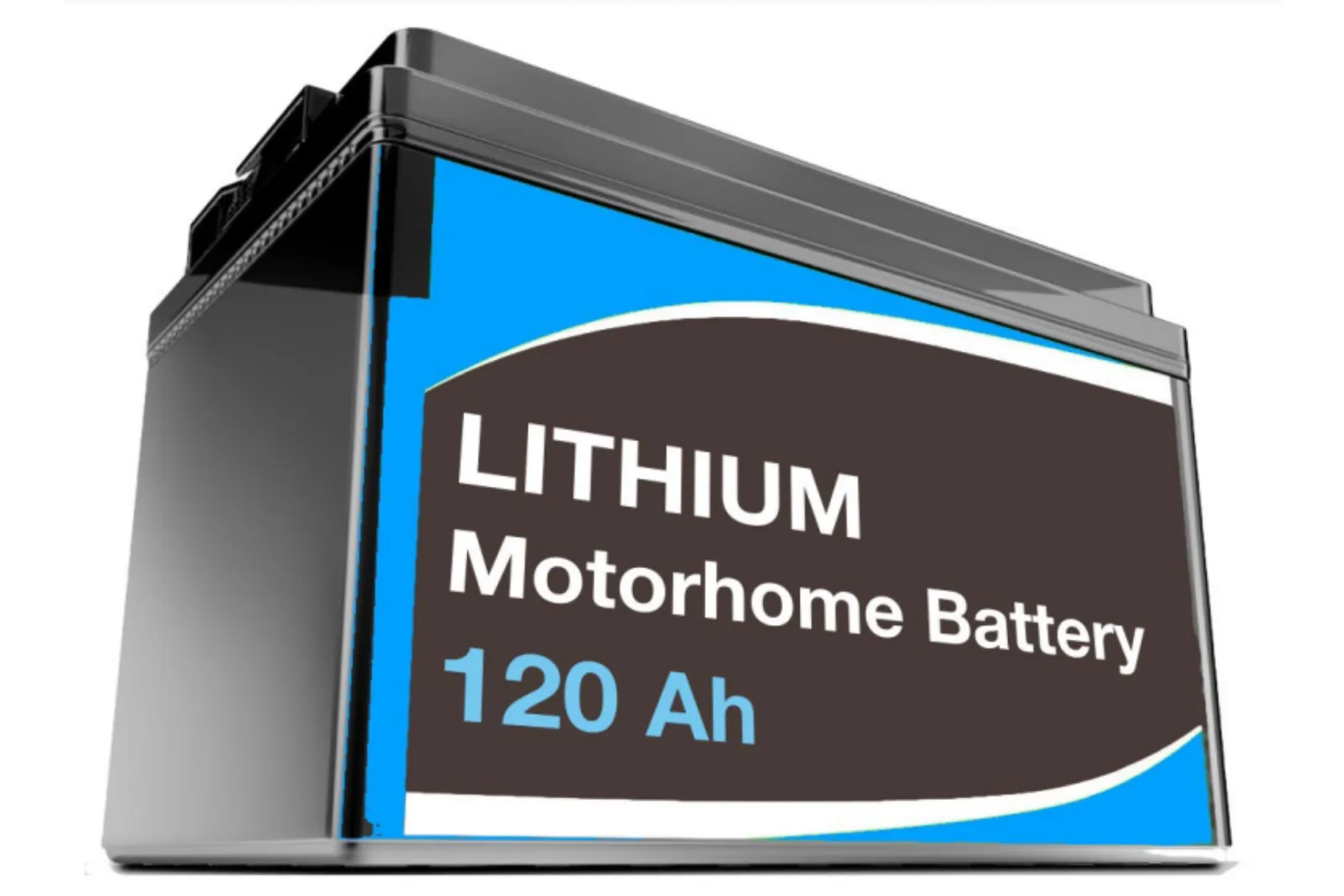With a couple of extended trips on the horizon we took the plunge and invested in 2 x 120 Ah LiFePO4 (Lithium) batteries to replace our 2 x 100 Ah AGM batteries.
Our two 100 Ah AGM batteries had a total ‘usable’ capacity of 100 Ah (50% of the total combined capacity), while each 120 Ah lithium battery has a ‘usable’ capacity of 96 Ah (80% of total capacity).
So, we could have saved some dollars by replacing the pair of 100 Ah AGM batteries with just one 120 Ah lithium battery. That would have provided us with around the same stored energy capacity as we had with the two AGM batteries, saved a lot of weight and given us the lithium advantage of steady and consistent voltage. However, it would have been a considerable effort and expense for a minimal gain. As the saying goes, if making the effort to go to the well why come back with a half-empty bucket?
By replacing both 100 Ah AGM batteries with 120 Ah lithium batteries (connected in parallel) we have almost doubled our off-grid 12-volt energy capacity, while more than halving our battery weight. We now have a total usable battery capacity of 192 Ah, compared to 100 Ah with the AGM batteries.

Taking Charge
Lithium batteries are relatively expensive, but they are not the only expense involved in the battery exchange. AC-DC and DC-DC chargers also need to be considered, along with the battery monitoring system.
While some battery suppliers suggest that their lithium batteries can be directly swapped with AGM batteries without any other system upgrades, I feel that this may be more sales pitch than honest engineering advice.
The battery management systems (BMS) built into lithium batteries may do a satisfactory job of modifying the output voltage of an AGM charger to suit the preferred maximum charging voltage of lithium batteries. However, I remain to be convinced that a BMS is able to adjust the overall charging stages of an AGM charger's output to suit the specific charging requirements of lithium batteries. I would also expect that installing charging devices with a tailored lithium profile will contribute to a better long-term outcome for battery performance and lifespan. It’s a bit like feeding an athlete a diet of takeaway food – they will survive, but not prosper. My opinion only, of course!
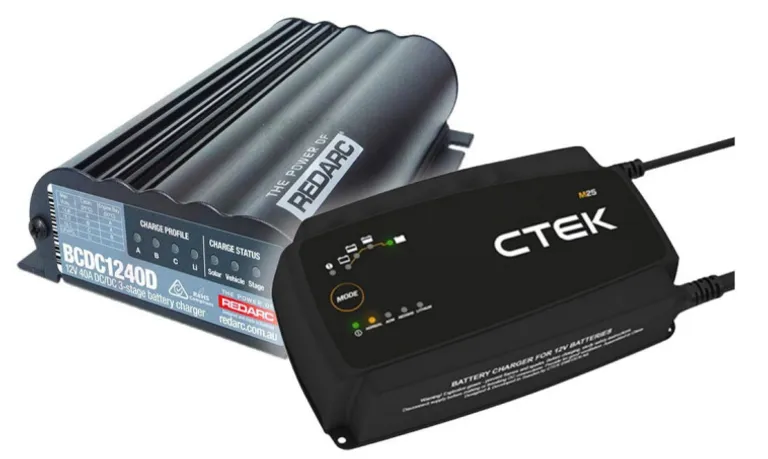
Our van was already fitted with a lithium-capable Redarc 1240D DC-DC charger. All that was required to activate the charger’s lithium profile was a change in the wiring at the rear – joining the green and orange wires. We replaced our AC-DC charger (a CTEK MXS 25) with a CTEK M25 model that has a lithium profile. The new charger is exactly the same size as the old charger, which made for a very easy replacement. Even better, it auto-detected the lithium batteries and adjusted its profile appropriately.
Providing a neat conclusion to the exchange process, a neighbour who was fitting out their van with a fridge for weekends-away surfing offered us $200 for the AGM batteries and the AC-DC charger, which was a preferred outcome to a trip to the local recycling centre.
Other Considerations
Continuous Current: This is an important consideration if you will be running 240-volt equipment through an inverter. The 120 Ah lithium batteries have the capacity to supply a comparatively high continuous current – 100 to 120 amps. Connecting two batteries in parallel increases the continuous current capacity of the battery bank to around 30%-50% more than the individual continuous current capacity of each battery.
Parallel Balance: Batteries in a parallel setup must be the same capacity and age as each other (even down to ideally being from the same production batch according to some gurus!). Before fitting the batteries in the van we fully charged each separately, so that they had the same level of charge when first connected.
Battery Monitor: Our control panel console used a voltmeter to display the voltage of the AGM batteries. As part of the battery exchange process we fitted a more comprehensive ‘Coulomb counter’ battery monitor, which is required to measure the State of Charge (SoC) of lithium batteries.
Which Battery?
There are plenty of lithium batteries from which to choose, these days. While budget is always going to be a consideration, I tend to keep in mind that quality will be remembered long after the price is forgotten.
After much looking around, comparing pricing and spec sheets, our choice came down to two batteries: iTechWorld 120 Ah and Sphere 120 Ah. Both were around the same price and had appropriate specs – particularly relating to their battery management system, cell construction, cell balancing, and continuous current draw. We also considered a single 200 Ah battery, but the retro-fitting space availability was a restrictive factor.
iTechWorld had an ‘Show Special’ promotion for AUD $780 (normally $975), which was very tempting. At around the same time we spoke with a friend in the caravan fit-out business who has installed plenty of Sphere lithium batteries and recommends (and supports) them, and could supply them for $800 each (normally $1029). The local support aspect tipped the balance for us to go with the Sphere batteries.
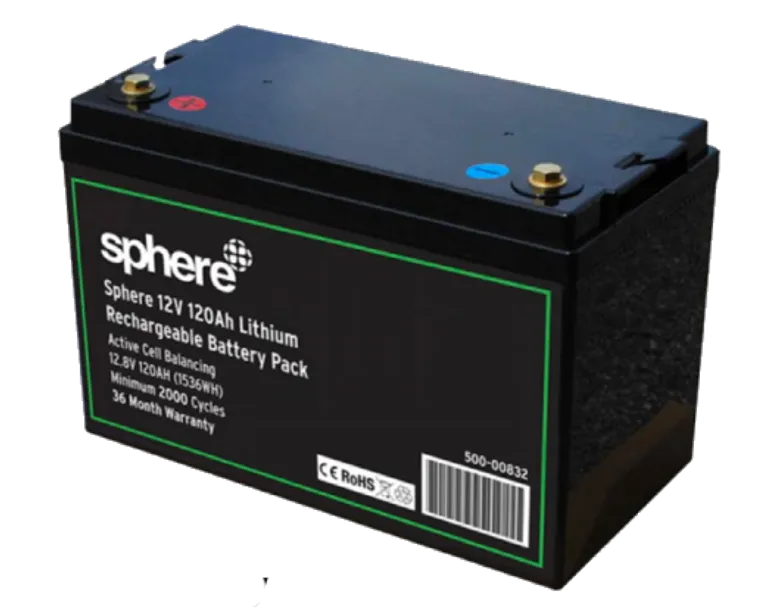
Other Lithium Battery Options?
Don’t bother with the China Cheapies on eBay. Reports suggest that the published specs don’t always match reality. I expect they will end in tears or at least major disappointment for many.
Redarc, like other reputable brands, had 120 Ah batteries for around $2000, but I couldn’t see enough difference in their specs, when compared to the $1000 batteries (from other equally reputable local suppliers), to justify the cost At the other end of the spectrum, Aussie Batteries had a 120 Ah ATLAS brand battery for $549, but digging into the specs they come up short in their maximum continuous current rating, at 60 A (peak 90 A). Ditto for VoltX batteries at 50 A. These batteries will struggle with the demands of appliances running through an inverter.
Cable Clutter
As is often the case with otherwise straightforward projects, one thing often leads to another and the battery swap provided an opportunity to tidy up our battery cabling and connections.
We replaced the cables between the two parallel batteries with heavier and shorter cables. We also installed a couple of dual distribution posts adjacent to the batteries (Jaycar, $12). All appliance and charger cabling is now connected to the distribution posts, which are connected to the batteries with heavy gauge (2 B&S) cables. These cables are readily available in various lengths in the battery section of your local auto parts store for around $20. Though for reasons unknown to me, red cables are difficult to find in local auto stores. Black and blue seem to be the popular colours.
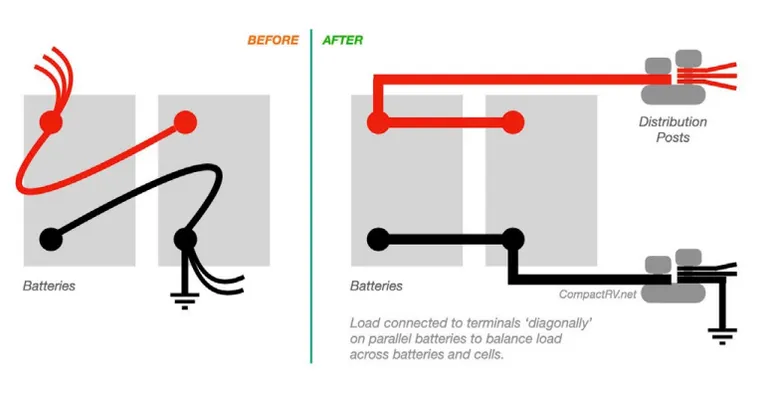
The AGM batteries were contained in two plastic battery boxes. We have replaced these boxes with a sturdier and much tidier laminated marine ply housing. The cable distribution posts mounted adjacent to the battery housing provide much easier access to existing cabling connections, and will simplify the connection of any additional cabling in the future, without requiring direct access to the battery terminals. The new battery housing also provided a solid platform on which to mount a new power inverter, in an ideal location close to the batteries.
First Impressions

Weight: The first and most obvious change in the new installation is the weight of the batteries. Quite amazing. The pair of AGM batteries weighed in at a total of 62 kg, while the 2 x 12 kg lithium batteries weigh just 24 kg in total. That’s an instant weight saving of 38 kg!
We will no doubt soak up that weight differential with other items (we have already purchased a flat-pack fire pit that checks in at 18 kg). I will be looking forward to a visit to the local weigh-bridge when we are loaded up for our next trip.
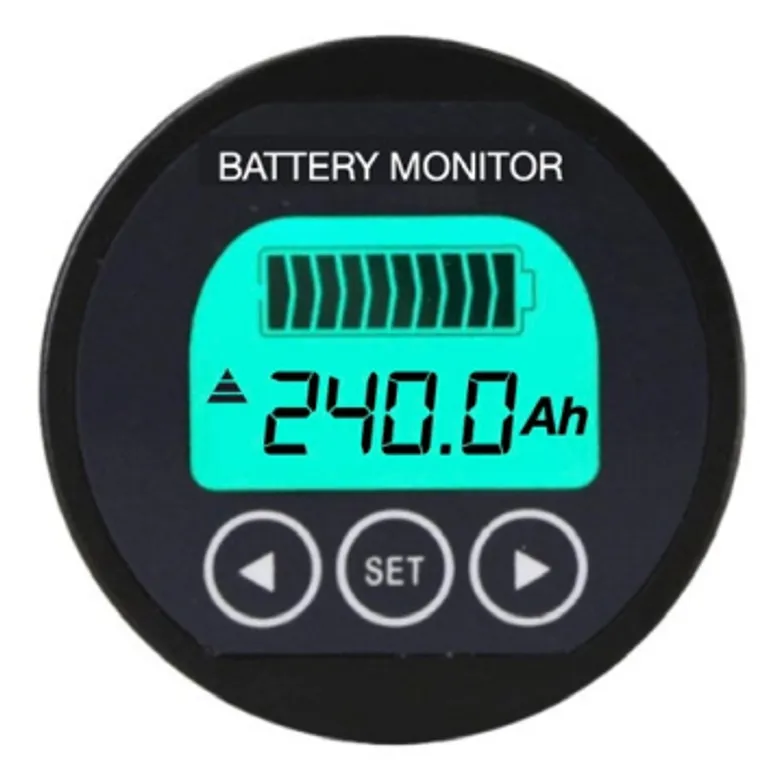
Battery monitor: The State of Charge (SoC) of an AGM battery can be measured with a voltmeter, thanks to the relationship between the SoC and the linear decline in AGM battery voltage. This measurement isn’t practicable with lithium batteries as their voltage remains reasonably constant across their discharge range. A lithium battery may be 50% discharged, but still maintain a voltage of 12.9 V.
To measure the SoC of the lithium batteries we have fitted a new battery monitor – a Coulometer – that displays the remaining charge in the batteries by counting the amps in and out of the batteries.
I should have installed one of these monitors years ago, as they work just fine with AGM batteries too. The monitor displays not only battery voltage, but also amps in, out, the remaining Ah and the percentage charge remaining. No more battery anxiety – we now know exactly how much current each appliance is consuming, how much current is being returned to the battery from the solar panels, the alternator or the mains charger; and exactly how much Ah capacity remains in the batteries. These monitors are available online for around $60 from Amazon, etc, or from local suppliers for around $150.
Discharge Period: The new battery monitor indicates that with the 110-litre fridge running on its coldest setting, the lithium batteries are discharging around 27 Ah between 6:00 pm and 6:00 am. That's around 2.25 amps per hour.

During the following mostly sunny days (in autumn on the NSW South Coast) the batteries regain around a net 13 Ah from the 150 W rooftop solar panel (with the fridge still running), creating a net 24 hour deficit of 14 Ah. I expect that this deficit would be reduced considerably during summer, but let's go with the autumn figures as a useful average number.
The maths says that at 14 Ah net consumption per sunny autumn day, our 192 Ah usable battery capacity will power our fridge for nearly 2 weeks, with charging from only the 150 W rooftop solar panel. Applying the same calculations to the AGM batteries, we would have had around one week of 12-volt power available
Re-charging: In theory, lithium batteries are able to re-charge much more quickly than AGM batteries. Lithium batteries can charge at a rate up to 100% of their capacity, while AGM batteries are limited to a re-charge current of up to 30% of their capacity.
That’s all good in theory! However, lithium batteries achieving faster charging depends on a relatively high rate of charging current – maybe 50 amps or more – a bit of a moot point if your solar panels are producing only a small amount of current that doesn’t take advantage of the potential higher recharge current capacity.
The reality is that with only around 6 amps-per-hour input from our 150 W solar panel (2 to 3 amps of which is consumed by the fridge), there will only be a small reduction in the recharge time of the lithium batteries compared to AGM batteries. With higher current input from the vehicle alternator or the 230-volt charger, the lithium batteries are likely to recharge more quickly than AGM batteries when these sources are generating current. This is especially true in the final stages of the charging period, which are quite markedly tapered for AGM batteries.
The battery monitor indicates that, when plugged in to power, the CTEK M25 AC-DC charger is feeding 25 amps into the batteries. When the engine is running, the vehicle alternator is pushing 40 amps into our energy storage, even when idling. The alternator charge rate is governed by the capacity of the DC-DC charger.

Appliance Options: The lithium batteries have given us the opportunity to install an inverter to power 230-volt AC appliances from the 12-volt DC batteries. We can now pull up for lunch and pop a couple of toasties in the sandwich press!
Lithium batteries are able to supply a high level of continuous current, compared to AGM batteries – in the order of a continuous 130-150 amps when connected in parallel.
The couple of toasties in the sandwich press for lunch pulls current at the rate of around 97 amps per hour, draining 5 Ah from the batteries’ storage to toast us up a treat. It only takes around 10 minutes of driving after lunch to recharge the current used for the toasties!
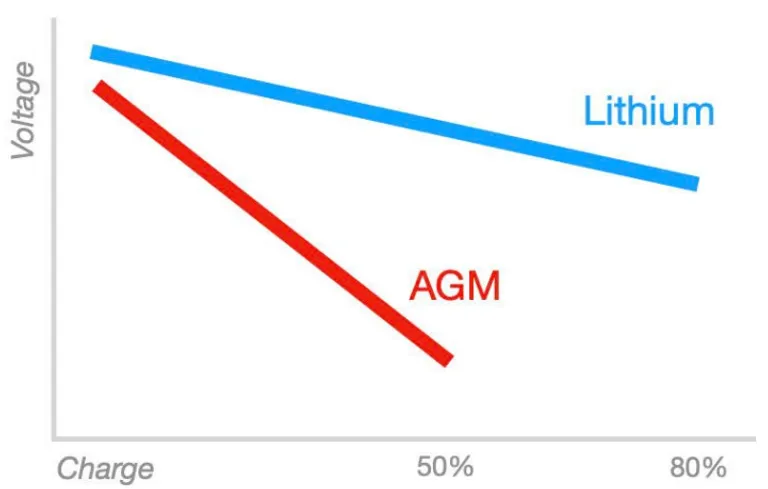
Voltage: After testing the lithium batteries for five consecutive days and nights, with the fridge running and no charging other than from the 150 W solar panel, the voltage hasn't dropped below 13.0 V. After a similar period our AGM batteries’ voltage would have been hovering around 12.2 V.
Given the constant higher voltage, our fridge is likely to maintain a more reliable temperature over a longer period of time and will use slightly less current when operating at the higher voltage.
Life Cycle: The label on the new lithium batteries indicates that they have a minimum 2000 charge cycles, which will last us forever! Well, maybe not quite forever, but longer than the AGM batteries.

AGM batteries are able to be discharged/recharged around 500 to 800 times over their lifespan, if not discharged to below 50% capacity. Lithium batteries have at least 2000 recharge cycles if not discharged below 20% capacity; up to 6000 cycles if discharged to only 50% capacity.
Hopefully the new batteries will maintain their performance for 10 or more years, so I will feel more relaxed about the high up-front cost. However, I am not so naive to think that there won't be something bigger and better available by then! Links to more detailed information about batteries and upgrade options are available at CompactRV.net.au. Enjoy!

